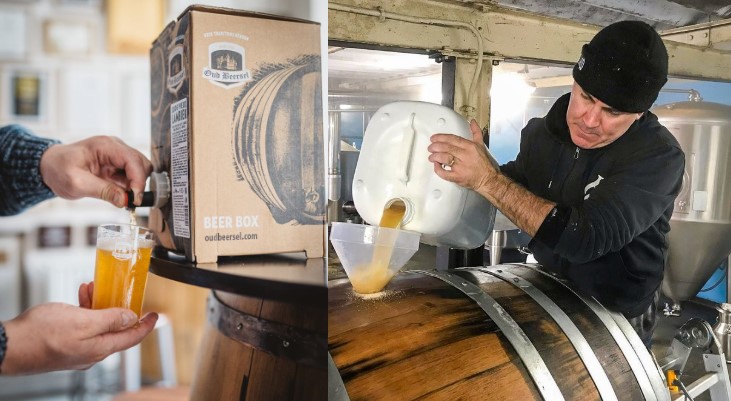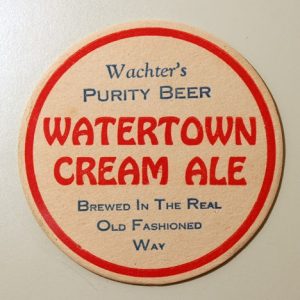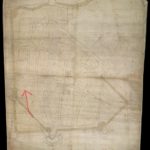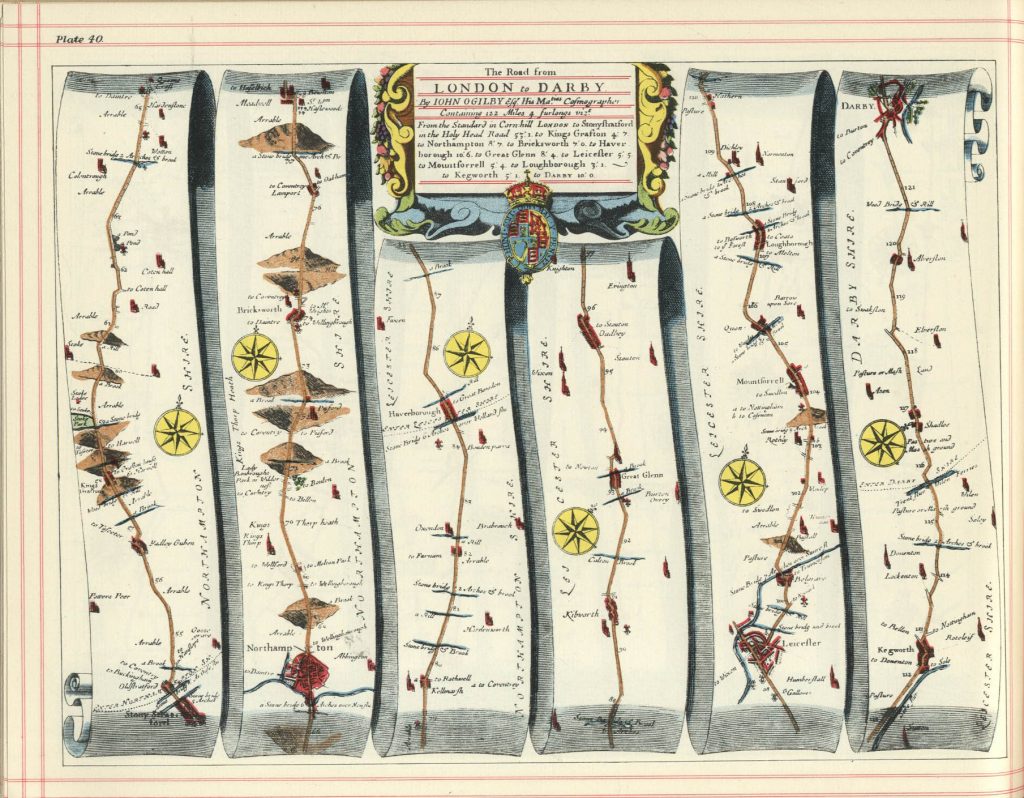I’d like to raise a mug to all those workers out there who make possible the pint of beer it contains. This has been a rough year. Depending on how you count, the pandemic put somewhere between thirty and forty million people out of work. Many breweries were forced to lay off staff as volumes fell.
The BBC (again) published about the why for those being displaced in shops, restaurants and bars serving the now empty high-rise office block with particular attention paid to the underground network beneath much of downtown Toronto:
For businesses in areas like the PATH, the Covid emergency phase is not over,” says Dan Kelly, president of the Canadian Federation of Independent Business. “Yes, the government is no longer imposing closures, but effectively you may be closed because you have no customers.” While no agency has calculated the estimated cost of these closures yet, the businesses in the PATH typically generate $1.7bn in revenue annually and generate about $271m in tax revenue, according to the city of Toronto, and many have been shuttered since mid-March.
What is a bar to do when its whole model is predicated on the presence of humans? Maureen asked a similar question. I answered: “goats!”
What news of beer otherwise? First, some law and an application for municipal planning approval for the replacement of everything on one (again) Toronto City block has caused great upset. Because it is the location of a dive bar called Sneaky Dee’s:
Local Toronto bar Sneaky Dee’s could be torn down after the city announced it has received a proposal for a 13-storey building in its place. The proposal, which was submitted Sept. 4, calls for a mixed-use building that would cover the current residents of 419, 421, 423, 429, and 431 on College Street. It would also consist of a total of 169 units and more than 13,000 square metres of “combined residential and non-residential gross floor area.” Some Torontonians took to Twitter to express their unhappiness about the proposal, and a petition has been started calling for it to be rejected.
In other legal unhappiness, much has been made of the implications of the firing of many staff by Surly, a craft brewery in Minneapolis, coincidental to a union drive. “Arise, Surly Workers” wrote Dave Infante who noted an obvious trend:
In the few instances where workers in the craft brewing industry have seen through the charade and decided “lol this sucks, let’s organize,” owners have dropped the #oneteamonedream pretense with the quickness. It happened at Rogue Ales in Newport, OR in 2011; and again at Pyramid’s Berkeley, CA brewpub in 2013; and in 2019 in San Francisco, where workers at Anchor Brewing, the country’s oldest craft brewery faced a decidedly corporate union-busting campaign that featured high-powered anti-labor law firms and managers shouting “fake news” at workers exercising their federally protected right to unionize. Very cool shit, nice work all around.
 T-Rex understood what was what as illustrated to the right. Beth, too. And GBH published something a wee bit adrift on the topic but, surprise, could not come to clear conclusions. In sum:
T-Rex understood what was what as illustrated to the right. Beth, too. And GBH published something a wee bit adrift on the topic but, surprise, could not come to clear conclusions. In sum:
The tension between the two narratives shows that despite businesses reopening, the pandemic’s dramatic effects on the hospitality industry are far from over… It’s currently unclear whether the Unite Here union has any legal avenue to fight the layoffs or planned Beer Hall closure.
Displaying greater clarity, this explanation about pouring central Euro lager is excellent. Effective use of social media. Twenty-seven 600 word articles on the subject could not have put it so well.
Note: not a brewery. A beer company, sure.
Note: not small. Not really even a beer company anymore, either.
More law. Ron wrote an interesting post on a question of Scots law, circa 1948 in the case of more than one case of “Dodgy crown corks”:
The defect in their condition was due to being kept in the damp cellar since February 1948. Dunn knew that corks should be stored in a dry place, and that dampness encouraged the growth of various moulds. Moreover, he failed to use the corks in the order in which they were sent to him. Further, he or his servants ought to have inspected the corks within a reasonable time after delivery, and in any event prior to using them.
Nice touch in the report on the use of “various moulds” indicating, perhaps, a particularly unpleasant multi-coloured effect.
Completely separate from either the situation today and the law, Merryn published a piece on the conclusions drawn in her thesis on pre-historic brewing – very high on the neato scale:
Brewing uses few ingredients, only requiring malted grain, herbal preservatives, water and yeast. These ingredients may survive in the archaeological record in a number of ways. Accidents in drying the malted grain, as happened at Eberdingen-Hochdorf can occur. Residues or sediments of the brewing process may occasionally survive in unusual contexts, such as in the sealed Bronze Age cist graves at North Mains and Ashgrove. Residues of barley without any other plant remains indicate the residues that result from washing the sugars from the mashed barley or ‘sparging the wort’. Those barley residues that contain pollen or macro plant remains indicate the addition of herbs during the boil prior to fermentation.
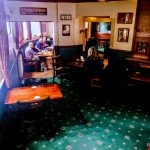 Again, and without a thought for the law, Retired Martin has again taken us to a place without the cares of the day… except in this episode of his series entitled “287,392 UK Pubs” he explains how those at the Blake Hotel in Sheffield are managing the Covid-19 social distancing rules:
Again, and without a thought for the law, Retired Martin has again taken us to a place without the cares of the day… except in this episode of his series entitled “287,392 UK Pubs” he explains how those at the Blake Hotel in Sheffield are managing the Covid-19 social distancing rules:
3 pm on a Saturday, filling up but quieter than you’d think, a landlord giving the now customary speech. “Take a seat, fill in the track and trace, follow the one way system, one at a time in the loos, leave glasses on the table“ I felt sorry for him. “I’m sounding like a stuck record !“. “We’re trad drinkers, we miss the interaction at the bar” said the next group. I know how they felt.
Speaking of ye olden times, Eoghan Walsh published a good story of a gruit revival, something I may now have lived through two or three times. While a nod to Unger‘s clarifications on the important role control of gruit played in medieval society would have been nice, I love this level of detail:
Invaluable input came from a most unexpected source: a rich seam of human excrement mined by archeologists from the bottom of a medieval latrine. “They found the remains of hops, juniper, caraway, and bog myrtle, and they asked me how this could be possible that in one stratum of this toilet are these four ingredients appearing together at the same time,” Overberg says. “They thought this clearly had something to do with brewing.” And Overberg naturally agreed. “They have excavations for a period of 300 years, and it is all the same. It’s always hops and bog myrtle, caraway, juniper.
Lastly, The BeerNut wrote a review (no, really he did!) that contained a passage that triggered another thought:
Pyynikin has really missed the mark on “Pacific” here. There’s not an iota of tropicality about this, and nothing American either. Maybe it’s a Finnish take on New Zealand’s ubiquitous Canterbury Draught, because that’s about the only way it makes sense. As beer in its own right it’s inoffensive, and might even be enjoyable as a dark-evening sipper. I couldn’t deal with the surprise, however, and resented it for the rest of the glassful. Adjust your expectations accordingly.
My first thought was it was clearly a tribute to the possible first brewer in Quebec, Brother Pacifique Duplessis. But then I thought… how little I care about branding of beers. Then I realized how much I have to wade through every week is basically (i) folk writing about the branding of beer especially as displayed on the container. As opposed to the beer itself … and clearly unlike the TBN above who makes note of the missing connection. Then I wondered what else are similar categories for me: (ii) fun and pozzie but samey brewery owner interviews, (iii) conversely, greater important questions of rights contextualized in brewing, (iv) then, conversely again, dreary cut and paste posts of others’ research labelled as “reporting” and… (v) all the superlatives. Always the superlatives. Each theme has its audience I suppose and certainly varies in ultimate value… but what percentage of the weekly collective output isn’t one of the five categories above? Sure, these things come in waves – like yesterday’s topics of food pairing and sell outs – but more would be good to add. Please advise by next Wednesday. A fella has deadlines, you know. Next big thing could be canals. Could be.
There. Done. For more please check in with Boak and Bailey Saturdays, plus more at the OCBG Podcast on Tuesdays (where Jordan points a particularly pointy finger at the letter “B”!) and sometimes on a Friday posts at The Fizz as well. And sign up for Katie’s weekly newsletter, too. Plus the venerable Full Pint podcast. And Fermentation Radio with Emma Inch. There’s the AfroBeerChick podcast as well! And have a look at Brewsround‘s take on the beer writing of the week. Not to mention Cabin Fever. And Ben has finally gone all 2009 and joined in with his own podcast, Beer and Badword. And BeerEdge, too.

